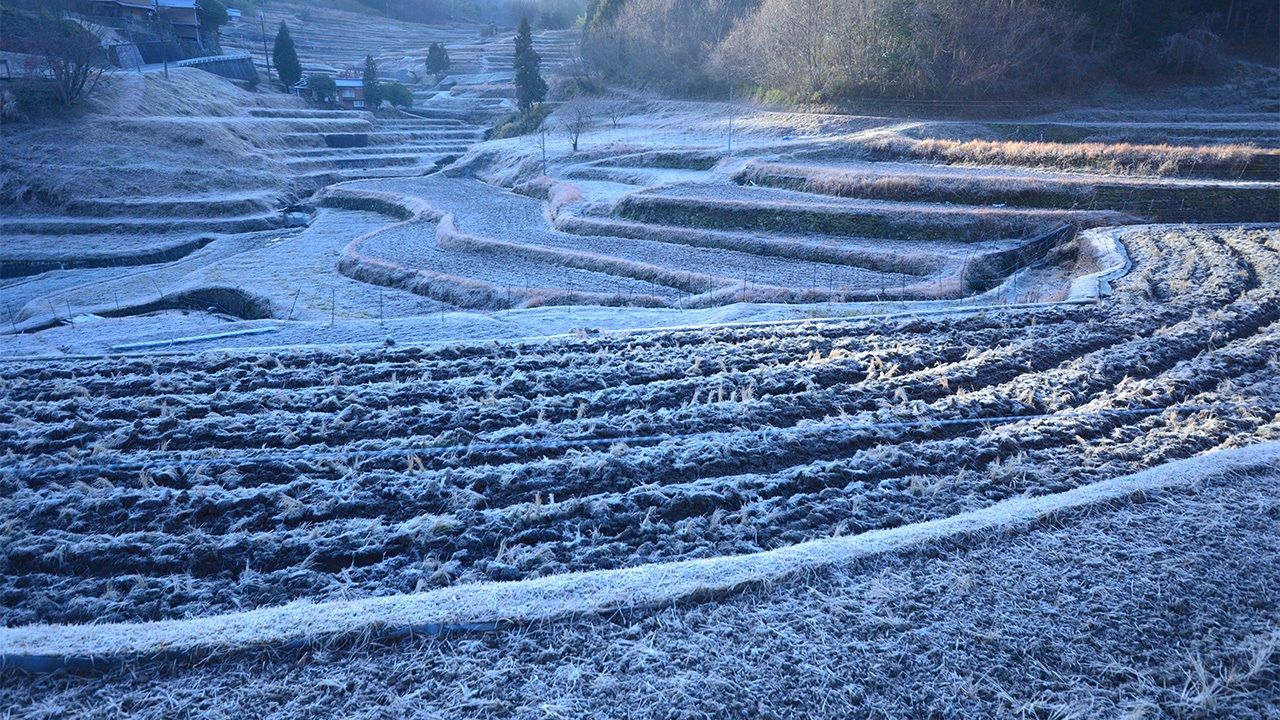
A Journey Through Japanese Haiku
Hogging the Moon
Culture Environment Lifestyle- English
- 日本語
- 简体字
- 繁體字
- Français
- Español
- العربية
- Русский
霜百里舟中に我月を領ス 蕪村
Shimo hyaku ri / shūchū ni ware / tsuki o ryōsu
Frost for a hundred ri—
In the boat, I have
the moon to myself(Poem by Buson, perhaps written in 1775.)
Frost formed on winter nights was associated in waka poetry with the brilliant color combinations of autumn leaves, and often compared to gray hair or the light of the moon. Here, Buson’s haiku also depicts the frost under moonlight.
“A hundred ri of frost, as far as I can see, I wake at night alone in the boat, and enjoy the moon to myself” is the rough meaning of the poem; a ri is a unit of distance, around four kilometers. It was written when Buson traveled along the Yodo River toward Kyoto with his follower Kitō. Boats took passengers between Hachiken’ya in Osaka and Fushimi near Kyoto, at what must have been late at night. The bright white frost on both sides of the river, gleaming under moonlight, seemed to go on forever, and the winter moon shone in the sky above. The chance to drink his fill of that scenery alone must have seemed a real luxury.
The vocabulary and mood of the poem is reminiscent of kanshi (Chinese poetry). Ueda Akinari (1734–1809), famous as the writer of Ugetsu monogatari (trans. by Anthony Chambers as Tales of Moonlight and Rain), called Buson a kanagaki no shijin, which roughly translates as a writer of Chinese poetry in Japanese (kana), indicating how he often invoked the spirit of kanshi in his haiku. In this case, the initial elegance culminates in tsuki o ryōsu (I have the moon to myself), and one senses some humor in the pride he displays. In the Edo period (1603–1868), kanshi was a foundation for education, and Buson enjoyed combining Chinese aesthetics with the lighter tone of haiku.
(Originally published in Japanese. Banner photo © Pixta.)
literature Yosa Buson haiku Japanese language and literature